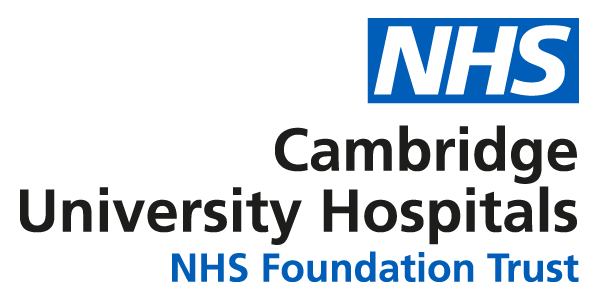Contact dietitian: ………………………………………………… 01223 216655
This leaflet provides advice on how to optimise your energy (calorie) and protein intake.
Many people with illness find there are times when they cannot eat as much as usual, and they may lose weight. There are many reasons why this may happen, such as loss of appetite, feeling full quickly, effects of treatment, worry or any combination of these.
Eating well helps you to avoid losing weight, and helps your body re-build damaged tissues, fight infection, and cope with the side effects of treatment. If you are not eating as well as you would normally, the following tips may help you to eat more.
Eat little and often
Try to include snacks between meals and before bed. Keeping snacks at easy reach may help you to eat more often. Here are some snack ideas:
- biscuits, cakes and fun sized chocolate bars
- sandwiches
- small pieces of pizza, flan, sausage rolls, pork pies, pasties, scotch eggs
- fruit (fresh and dried) with cream or custard
- crackers with cheese or pâté, cheese straws or cubes
- bhajis, pakoras, spring rolls, halva, Bombay mix
- ready-made desserts such as yoghurt, crème caramel, trifle, mousse, cheesecakes
- crisps, nuts, olives, savoury biscuits, bread sticks with humus or dips
- crumpets, scones, bagels, muffins, croissants, toast, breakfast cereal
Useful tips
- Be positive about what you do eat – every extra mouthful helps.
- Try not to get out of the habit of eating. You actually need to eat to stimulate your appetite.
- Make the most of the times you feel like eating.
- Don’t worry if it isn’t ‘normal’ foods at ‘normal’ times – if you fancy cereal at midnight, enjoy it!
- A short walk before a meal or some fresh air may help give you an appetite.
- A small glass of wine, beer, sherry or your favourite drink taken half an hour before a meal may boost your appetite. Check with your doctor first.
- Experiment with different foods. You may find that you like things you don’t usually eat.
- Accept offers from friends and relatives to help with cooking and shopping.
- Convenience foods are a useful standby and can be just as nourishing.
- If you have a freezer, try to prepare food in advance when you feel like cooking and store it for when you are not feeling so well.
- Avoid filling yourself up with large servings of vegetables, salads, water and fizzy drinks. They provide bulk but little nourishment.
- Sometimes the smell of food will be appetising while at other times it may put you off. If this happens, try to keep away from the kitchen while food is being prepared, or eat cold foods, which often have less smell.
- Avoid drinking with meals as this may fill you up and spoil your appetite.
Fortify your food
If you are only eating small portions the following tips may help you to get more calories without necessarily having to eat more food.
Start by buying full-fat foods. Avoid ‘light’ or ‘diet’ versions of foods. These are not appropriate for you at the moment.
Milk
Add 2oz (4 tablespoons) of milk powder such as Marvel or supermarket own brand to one pint of full cream milk. This can be used in the usual way in drinks, on cereals, in sauces and puddings.
Savoury foods
To savoury foods add cheese, fortified milk, gravy, milk powder, pulses, meat, cream, crème fraîche, pesto or butter/margarine (not low fat spread). For example:
- add beans, pulses or ground nuts and seeds to soups and casseroles
- cheese in mashed potato with milk, milk powder and butter/full-fat margarine/olive oil
- butter, full-fat margarine cheese or white sauce on vegetables
- add 2 tablespoons of milk powder to a portion of white sauce
- add grated cheese/cream/milk or crème fraîche to soup
- add cream/sour cream /crème fraîche or coconut milk to casseroles and curries
- add mayonnaise/ salad cream or pesto to sandwiches or have two fillings, such as: egg mayonnaise and bacon or cheese and ham
Sweet foods
To sweet foods add fortified milk, sugar, cream, honey, syrup, custard, ice cream, condensed or evaporated milk. For example:
- cream/custard/ice cream/condensed or evaporated milk with pies, sponge or fruit
- add extra sugar, honey or syrup to desserts and cereals
- make jelly with fortified milk, instead of water
- add 2 tablespoons of milk powder to a portion of porridge, milk puddings and custard
- add cream, yoghurt, sugar, honey, condensed or evaporated milk, dried fruit to breakfast cereals
If you are worried about having too much fat, try to include more foods which contain fats that are healthy for your heart. Fats such as rapeseed oil, olive oil, olive oil spreads, avocado, nuts and seeds are high calorie and ‘heart-healthy’. Ask to speak to a dietitian for further advice if you are concerned.
Privacy and dignity
Same-sex bays and bathrooms are offered in all wards except critical care and theatre recovery areas where the use of high-tech equipment and/or specialist one-to-one care is required.
We are smoke-free
Smoking is not allowed anywhere on the hospital campus. For advice and support in quitting, contact your GP or the free NHS stop smoking helpline on 0800 169 0 169.
Other formats
Help accessing this information in other formats is available. To find out more about the services we provide, please visit our patient information help page (see link below) or telephone 01223 256998. www.cuh.nhs.uk/contact-us/accessible-information/
Contact us
Cambridge University Hospitals
NHS Foundation Trust
Hills Road, Cambridge
CB2 0QQ
Telephone +44 (0)1223 245151
https://www.cuh.nhs.uk/contact-us/contact-enquiries/

